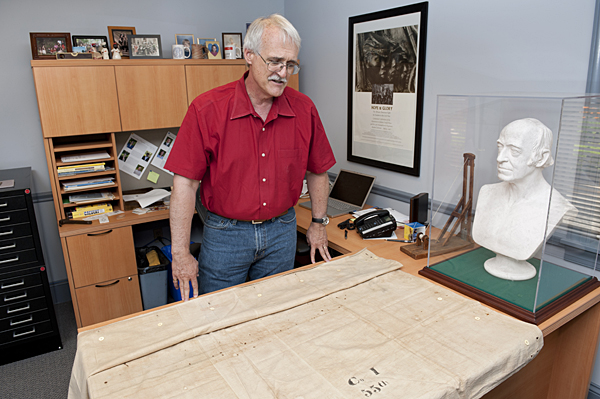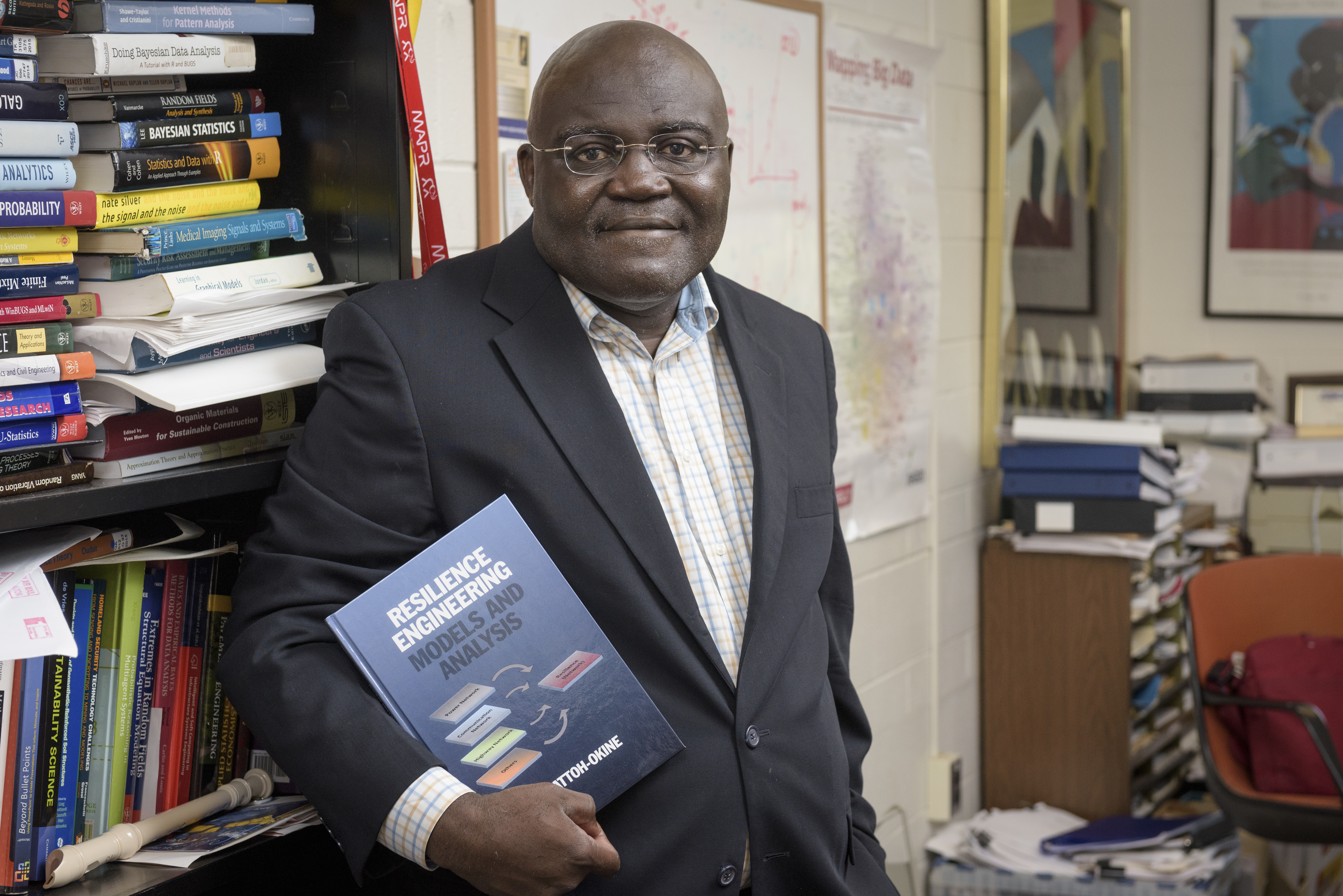Discovery in the attic
UD professor finds Civil War relic in Massachusetts
8:19 a.m., July 6, 2011--Ritchie Garrison was helping to clean out his late uncle’s attic in Massachusetts when he came upon an intriguing department store bag.
“When I saw what was inside, I almost fell over,” the University of Delaware history professor says. It was his great-grandfather George T. Garrison’s folded-up shelter tent from the Civil War, or more correctly, half of a shelter tent.
People Stories
'Resilience Engineering'
Reviresco June run
“Each man carried a half, and when you buttoned the two halves together and suspended it over a sapling or a rope, you had a two-man tent,” explains Garrison, director of the Winterthur Program in American Material Culture at UD. “They looked a little like pup tents and were an idea borrowed from the French military.”
Only about 30 shelter tents are known to exist from the Civil War, according to Garrison, and this one is even more rare because of its regiment of origin.
George T. Garrison served as a lieutenant and acting quartermaster in the 55th Massachusetts Volunteer Infantry. With the exception of the officers, it was one of the first units of the U.S. Army to be made up entirely of African American men. The regiment was stationed on Folly Island near Charleston, S.C., in 1863 until the war’s end. The island was a major staging ground for Union troops operating in the vicinity of Charleston.
The creamy white tent is made of cotton canvas and stamped “Company I, 55th” to identify the regiment and “H. S. McComb, Wilmington” for its maker and place of manufacture. Primarily machine sewn, the tent has hand-stitched buttonholes and buttons made of bone.
McComb, of Wilmington, Del., was the largest contractor for shelter tents in 1863, with contracts for 219,000 out of 585,700 tents made that year.
“Since this was the year my great-grandfather mustered into the service, it seems likely that his tent was issued in 1863, but McComb also had a contract in 1864 for 50,000 tents, so it could have been made and issued then,” Garrison says.
The prices for shelter tents rose during the war due to inflation and materials shortages. The tents in 1863 cost between $3.25 and $4.10 each, the price seemingly shaped by the cost of the cotton cloth used in their manufacture, Garrison notes. In 1864, McComb charged the government $5.48 for each tent.
Garrison has read about the tent’s use during maneuvers on Folly Island in his great-grandfather’s detailed diaries. He is working on transcribing those diaries for a future book, along with the diaries of his other great-grandfather, John Ritchie, who was quartermaster of the 54th Massachusetts Volunteer Infantry, the black regiment memorialized in the movie Glory.
“The two visited each other and sometimes served together in the war,” Garrison says, noting that John Ritchie was based on Morris Island and George Garrison on Folly Island with only an inlet separating them.
“These islands were loaded with mosquitoes and bad water. Imagine what it would be like living on a beach in a tent like this through the winter or in hurricane season. These tents were like sails.”
When he touches the tent, Garrison says he feels the strong pulse of family, from his great-great-grandfather abolitionist William Lloyd Garrison, who sought an end to slavery through non-violent means, and the son George who chaffed at such nonviolent beliefs and jumped at the chance to serve in one of the first black regiments of the Civil War.
“We’re the custodians of the nation’s history with items like these,” Garrison says.
Ironically, Garrison had just sent an article about Civil War tents off for publication when he made the attic discovery.
Article by Tracey Bryant
Photo by Evan Krape
Video by Andrea Boyle











